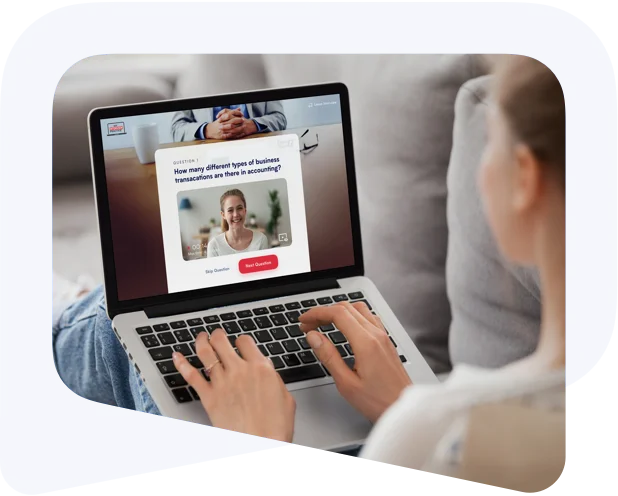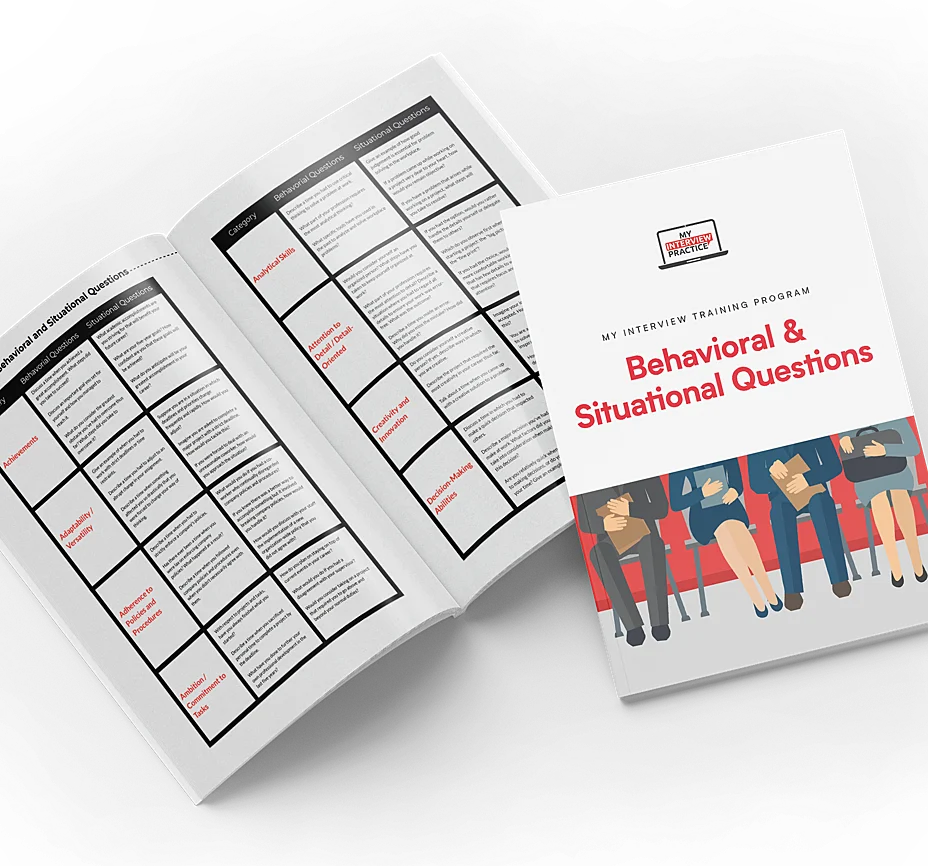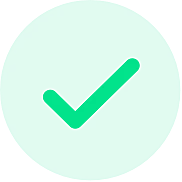 BACK
BACK
UX Designer Interview Questions
Position Summary
A UX designer is responsible for designing user interfaces that are easy to use and user-friendly. UX designers are responsible for gauging the functional and sensory needs of users to design interfaces for specific products.
UX designers work closely with application developers and graphic designers to make user-friendly products. They not only work in the development process but also conduct user research to determine the course of action for development.
Responsibilities
UX designer responsibilities include:
- Conducting user research and compiling data gathered
- Determining user needs based on research
- Identifying problems and providing appropriate solutions
- Designing a user-friendly interface alongside developers and graphic designers
- Evaluating a project after it is tested by users and making the necessary changes
Skills
A UX designer’s skills include:
- Clear communication skills when working with team members as well as users
- Being able to give and receive viable feedback
- Translating and organizing data into an understandable format
- Advanced IT skills that are relevant to design
- Ability to create client personas based on user research
Qualifications
A bachelor’s degree in a computer science discipline can go a long way toward making an applicant competitive, but experience and self-taught skills are enough to gain employment in the field. There are countless online resources for people to learn the skills necessary for a career as a UX designer, and experience and self-starting are valued over degree qualifications. A portfolio of prior work is required, however.
Salary
Salaries for UX designers range between $76K and $109K with the median being $93K.
Factors impacting the salary you receive as a UX designer include:
- Degrees (associate's, technical certificate, bachelor's, master's)
- Location
- Size and Type of the Organization
- Reporting Structure (seniority of the manager or supervisor you report to)
- Type of Services Offered and the Size of Projects Previously Worked On
- Level of Performance - exceeding expectations, etc.
UX Designer Interview Questions
Question: How would you define UX design, and how does it contribute to the application development process?
Explanation: This is a general question which the interviewer will ask early in the interview to begin the conversation, learn more about you, and collect some information they can use for subsequent questions. Answering this question properly will enable you to guide the interview in a direction in which you are comfortable where you will have the answers to the questions the interviewer will ask you.
Example: “UX design is the process of creating a user interface for software applications. The goal of UX design is to make the application easy to use and provide the user with an improved experience. The key concepts I incorporate into my UX designs are usability, intuitive interfaces, and user research.”
Question: Can you describe your UX design process from concept to completion?
Explanation: An interviewer will ask this question to better understand the process you use to do your job. This type of question is called operational and seeks to understand the processes, procedures, and techniques you use in this role. Operational questions are best answered directly and briefly.
Example: “UX design begins with user research. I conduct research to understand what the user needs are and how they will utilize the application I am working on. I then create several test designs with different features and demonstrate them to prospective users. Once I get their feedback, I settle on one design which I develop completely. I test it, and once I am satisfied, I hand it over to the application developers to incorporate into their product. We then collaborate to ensure the UX design works well with the features they build into the application. Once this process is complete, the application is released into production.”
Question: What is the role of the UX designer in the overall context of a software development project?
Explanation: This question will help the interviewer understand your perception of how you contribute to the overall design of an application. They will also look for indications that you’re a team player and can collaborate with other project stakeholders. The final point is to acknowledge all of the other contributors to the development process.
Example: “The role of UX designer in the context of a software development project is to create an interface that enables users to access the features and benefits of the application. This is best accomplished when collaborating with all the other application developers and utilizing input from prospective users and the application owners. The UX designer is a member of the overall team and contributes one of many parts of the application.
Question: What are the critical elements you consider most important when creating a UX design?
Explanation: Being able to discuss the elements of a UX design demonstrates your competencies, skills, and experience in this role. It will help if you talk about research, functionality, workflows, and other aspects of a well-designed application.
Example: “There are several key elements of a well-designed user interface. They are based on user research and the workflow of the application. Once they are understood, the UX designer focuses on the interface, usability, accessing the complete range of the application’s features and benefits, and creating a user interface that is both functional and intuitive.”
Question: Can you describe how you decide which features to include in the final product and which to eliminate?
Explanation: If given the time and resources, UX designers can include many features into their design. However, that is not practical. Therefore, you should be able to describe how you go about selecting the best features and eliminating ones that are either excessive or not needed. Your design should also incorporate application features, benefits, and workflow.
Example: “After conducting user research and understanding the strategy and technical limitations of an application, I create a UX design that incorporates a large number of different features. I then meet with the application developers and discuss concepts like minimum viable product, ease of use, intuitive designs, and other issues important to the function of the application. Finally, I remove any feature which is not required or does not enhance the user experience.”
Question: When a project doesn't go exactly as planned, what do you do to get it back on track?
Explanation: This question is meant to explore your problem-solving skills and your ability to stay calm when things go wrong. In addition to describing your strategies to deal with this issue, you may want to cite when this happened in the past and how your reaction to the issue resulted in a positive outcome for the project.
Example: “I have yet to work on a software development project where everything went perfectly. Issues occur, and impediments are encountered when designing any software and the UX interface. What I’ve found to be productive is not to let the issue derail my team and me. We confront it head on, brainstorm several ways to resolve the problem, and then pick the one we feel will work best. An example of this is when I worked on a recent project, and halfway through the project, stakeholders changed the specifications and requirements which required us to update the entire UX design to incorporate the changes. My team and I worked over a weekend to accomplish this, and the project was back on schedule the following Monday.”
Question: Do you try to put yourself in the mind of the consumer when creating a UX design?
Explanation: This is a follow-up question to some of the previous questions. In your answers, you mentioned incorporating user research and user input into your designs. Follow-up questions can happen at any time during the interview. Interviewers use this technique to correlate your answers and determine if you are consistent throughout the interview.
Example: “While I am working on a UX design, I always try to put myself in place of the users so I can understand how they will interact with the application and what features they will consider to be beneficial. However, I recognize I have a single perspective. Therefore, I conduct user research and testing throughout the UX design process to ensure a broad range of user input is incorporated into the designs I create.”
Question: What is your process for handing over your designs to the application developers?
Explanation: This is another question that will speak to your willingness to collaborate. Give a recent example of a project you worked on that can help illustrate your story. The goal is to show that you’re okay signing off on a project and trusting that it’s safe in the developer’s hands. In any design or development process, the step that receives the least amount of attention is when the project is finished and the design is handed off to the development team. You should have a specific process for accomplishing this since it is one of the most important steps in the entire project.
Example: "As a UX designer, I tend to hang onto my design and continue working on it, incorporating additional features and trying to perfect the interface. One of the things I’ve learned is when to finalize a design and hand it off to the developers. I review my design to ensure there are no superfluous features and the design is both economical and functional. I then formally hand it over to the developers and provide them with the documentation which supports the design. I make myself available for any updates or modifications the developer requests after reviewing my design or adding additional features to the application."
Question: Can you discuss the difference between UX design and other design disciplines?
Explanation: There are significant differences between UX design and other design disciplines. While any design focuses on the look and feel of the item and the experience it provides for the user, UX design also has to consider how the user interfaces with the product and how the design makes the product’s features and benefits available to the user. Your answer should address this.
Example: “UX design goes well beyond the simple look and feel of a product. It has to incorporate how the user interacts with the product and how they access its features and benefits. Software products also incorporate workflows, so UX design has to seamlessly move the user from one part of the application to the next logical one while also providing them options to go in several other directions. Finally, a UX design addresses the types of devices used to access the application and the different ways users interact with it, including visually, tactically, by voice, or by some other means.”
Question: Where do you get your inspiration for the UX designs you create?
Explanation: This is a general question that is unique to people who create or design things. While the UX designer needs to follow some guidelines and align their design with the application they are working on, they also need to incorporate a great deal of creativity and uniqueness into their designs. You should be able to discuss the sources of your inspiration and how you use them to create innovative designs that are both functional and attractive.
Example: “While always mindful of user needs and the features and benefits of the application, I try to incorporate innovative and exciting designs when creating application interfaces. Sources for my ideas include nature and art as well as psychology, physiology, and other human elements. I also look at other existing designs, determining which features I like and which ones I would eliminate for my designs.”
Additional UX Designer Interview Questions
-
What do you do first to communicate effectively with users to determine their needs?
-
How do you compile data gathered from user testing?
-
How well do you work in a team setting?
-
What pieces in your portfolio best showcase your skills?
-
Are you flexible enough to make changes to a plan at any phase of the project?
-
How does your work differ from graphic design? How does your work relate to graphic design and the work a graphic designer would do alongside you?
-
How do you process negative feedback?
-
How comfortable are you with strict deadlines?
-
Can you take on multiple projects at once?
-
Take us through your design process, step by step.
A word of warning when using question lists.
Question lists offer a convenient way to start practicing for your interview. Unfortunately, they do little to recreate actual interview pressure. In a real interview you’ll never know what’s coming, and that’s what makes interviews so stressful.
Go beyond question lists using interview simulators.
With interview simulators, you can take realistic mock interviews on your own, from anywhere.
My Interview Practice offers a simulator that generates unique questions each time you practice, so you’ll never see what’s coming. There are questions for over 120 job titles, and each question is curated by actual industry professionals. You can take as many interviews as you need to, in order to build confidence.
| List of Questions |
In-Person Mock Interview |
My Interview Practice Simulator |
|
|---|---|---|---|
| Questions Unknown Like Real Interviews | |||
| Curated Questions Chosen Just for You | |||
| No Research Required | |||
| Share Your Practice Interview | |||
| Do It Yourself | |||
| Go At Your Own Pace | |||
| Approachable |
The My Interview Practice simulator uses video to record your interview, so you feel pressure while practicing, and can see exactly how you came across after you’re done. You can even share your recorded responses with anyone to get valuable feedback.
Check out My Interview Practice
Positions you may be interested in
The better way to practice interviewing.
Simulate realistic interviews for over 120 job different titles, with curated questions from real employers.
Learn More
Get the free training guide.
See the most common questions in every category assessed by employers and be ready for anything.
Get the Guide




